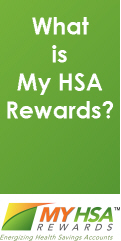I find it mildly humorous and mildly disturbing that President Obama is doubling down on his rhetoric regarding the 8 million enrollments into Obamadon’tgivarip, aka Obamacare. This in light of my personal experience so far with the Affordable Care Act (ACA).
So this morning I began round four with the actually nice, hugely apologetic, and functionally impotent folks at healthcare.gov. My mission was to speak with a real person and try to understand why, despite the fact that I am recently unemployed, I am not actually eligible to enroll in Obamadon’tgivarip. I am becoming a bit cynical, but not wholly unobjective. This on the heels of my failed third attempt to enroll.
I did speak with a live human; two in fact. First with Robert, who looked at my eligibility letter and confirmed that it said…what it said, and who then transferred me to Priscilla. Priscilla in turn confirmed that the letter said….what it said and ultimately could not help me. Turns out neither Robert nor Priscilla could actually look at my application. There neither could not begin to help me troubleshoot my application, which, as previously noted says I am both eligible and ineligible to purchase through the Marketplace. After Priscilla asked me a bunch of questions, including whether I was recently unemployed and on what date, she said she would refer me to a case worker who would review my file and would be “in touch.”
She could not tell me when my file would be reviewed (wouldn’t even venture an estimate when asked) or if I would be notified by phone or email.
Here’s the rub, the clock is ticking on my 60 day window (but it is more like 45 if I don’t want a coverage gap in June) to enroll for healthcare on the marketplace which should be possible from the date I lost my job. I can COBRA if I have too to the tune of $927 per month, which for a guy with no income at the moment is not a sustainable value proposition.
So, for the moment I look for employment and wait for the next chapter of my healthcare.gov story to unfold.
As an aside, if you look at the bottom right hand corner of healthcare.gov there is a logo depicting The White House and a website called USA.gov with the slogan “Government Made Easy” under it. I have no clue what USA.gov’s role is in the Marketplace, but if it is to make it “Easy” they are getting an F- in my book.
Filed under: business, health insurance, health savings accounts, healthcare, healthcare finance, humor, politics, Uncategorized | Tagged: ACA, Affordable Care Act, enrollment eligibility, healthcare, Healthcare.gov, marketplace, obamacare, USA.gov | Leave a comment »






